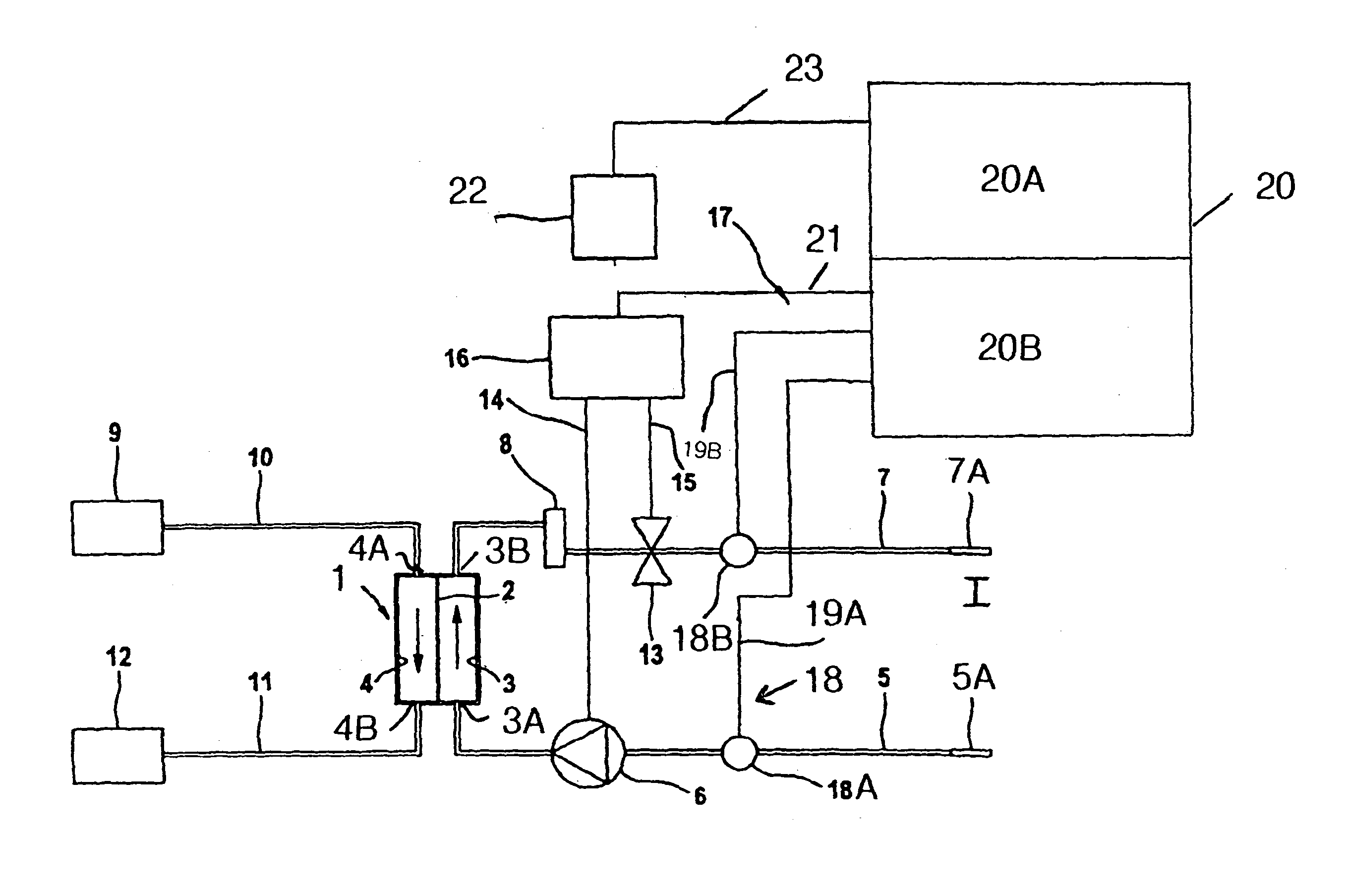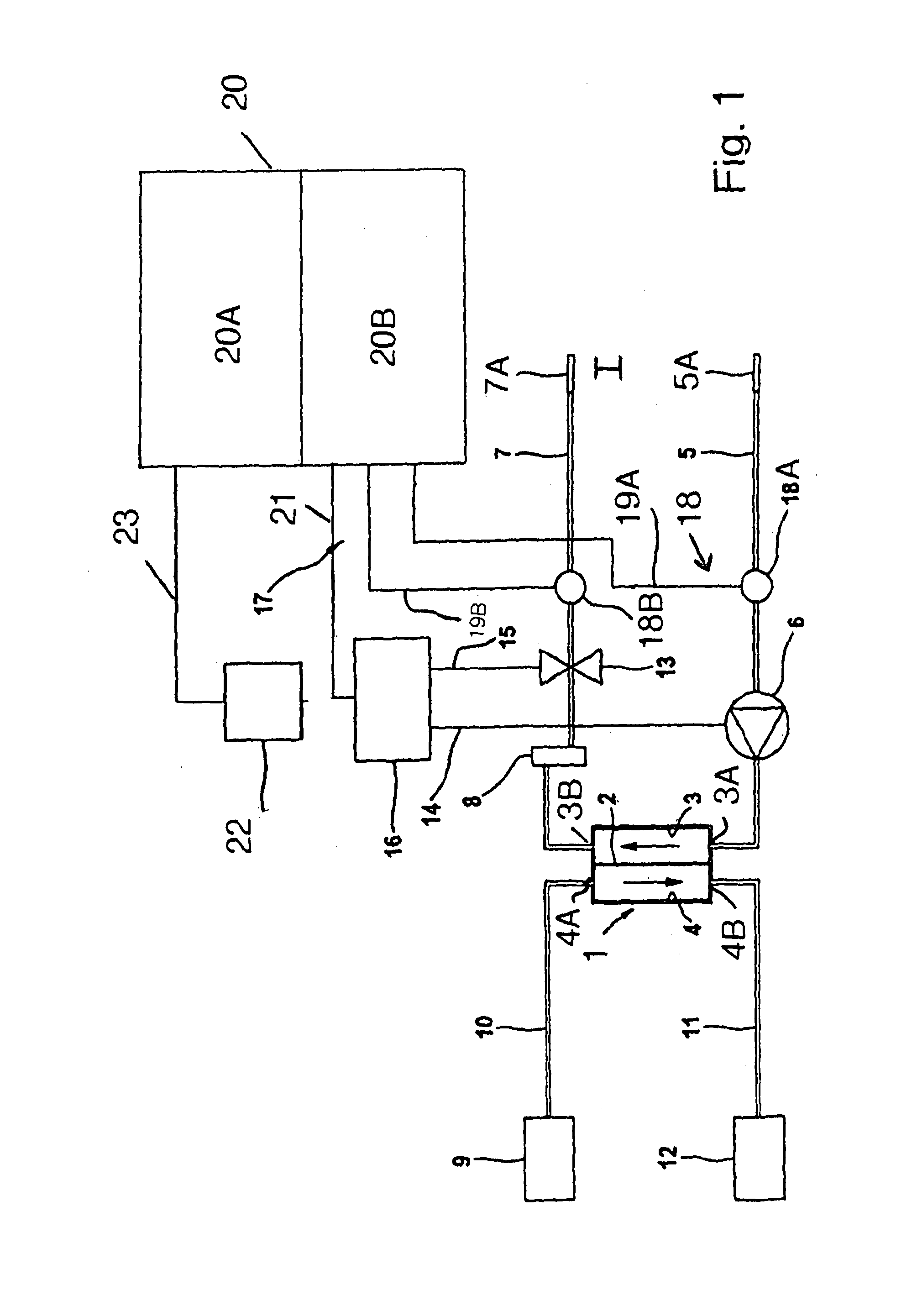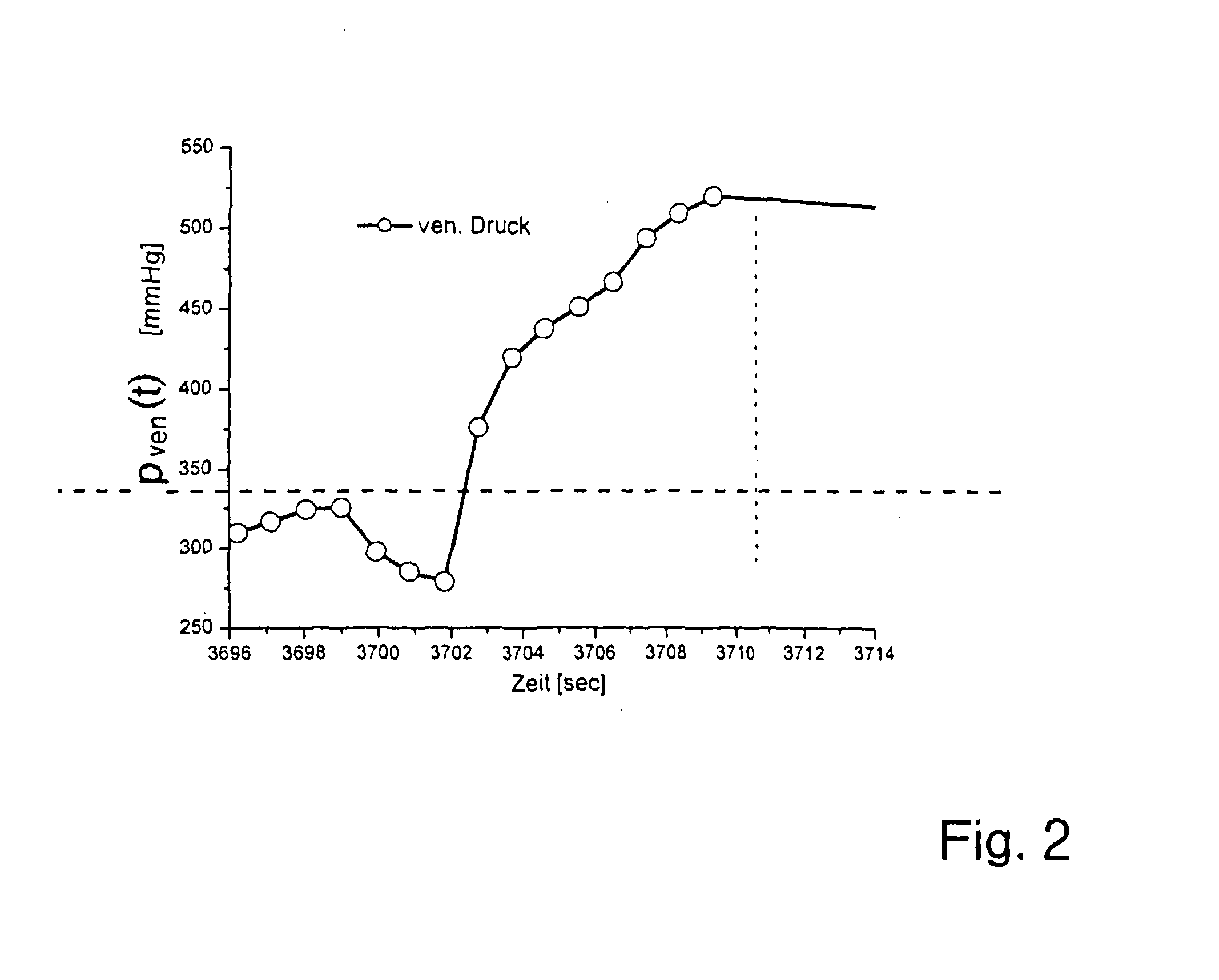Method and device for recognition of paravasal bleeding
a paravasal and bleeding technology, applied in the field of paravasal bleeding recognition, can solve the problems of perivascular bleeding detection in practice, faulty vascular access, therapy interruption, etc., and achieve the effect of increasing the safety and reliability of the monitoring system
- Summary
- Abstract
- Description
- Claims
- Application Information
AI Technical Summary
Benefits of technology
Problems solved by technology
Method used
Image
Examples
Embodiment Construction
[0027]FIG. 1 is a highly simplified schematic view of a dialysis apparatus as an embodiment of extra-corporeal blood treating apparatus.
[0028]The dialysis apparatus has, as a blood treating means, a dialyzer 1 which is divided by a semi-permeable membrane 2 into a blood chamber 3 and a dialysis-fluid chamber 4. Connected to the inlet 3A of the blood chamber 3 is an arterial blood line 5 into which a peristaltic blood pump 6 is connected. From the outlet 3B of the blood chamber 3, a venous blood line 7 runs to the patient. Connected into the venous blood line 7 is a drip chamber 8. Connected to the ends of the arterial and venous blood lines 5, 7 are needles 5A and 7A which are respectively inserted in appropriate arterial and venous blood vessels (shunts) of the patient. The arterial and venous blood lines 5, 7 form the arterial and venous segments, respectively, of the extra-corporeal blood circuit I. The blood lines are part of a system of flexible tubing which is designed to be d...
PUM
 Login to View More
Login to View More Abstract
Description
Claims
Application Information
 Login to View More
Login to View More - R&D
- Intellectual Property
- Life Sciences
- Materials
- Tech Scout
- Unparalleled Data Quality
- Higher Quality Content
- 60% Fewer Hallucinations
Browse by: Latest US Patents, China's latest patents, Technical Efficacy Thesaurus, Application Domain, Technology Topic, Popular Technical Reports.
© 2025 PatSnap. All rights reserved.Legal|Privacy policy|Modern Slavery Act Transparency Statement|Sitemap|About US| Contact US: help@patsnap.com



